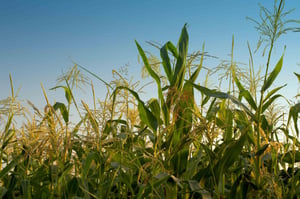 FAI offers comprehensive services for characterizing, preventing and mitigating fires and explosions due to combustible dust. Some of our recent agricultural industry services include:
FAI offers comprehensive services for characterizing, preventing and mitigating fires and explosions due to combustible dust. Some of our recent agricultural industry services include:
Testing Support
- Develop a cost effective test strategy to characterize material handled at a grain handling facility
- Perform dust explosion testing to determine moisture content, particle size, explosion severity, sensitivity to ignition and minimum explosion concentration
Hazard Assessment
- Conduct an on-site dust hazard assessment based on applicable National Fire Protection Association (NFPA) standards
Risk Assessment
- Identify and prioritize high risk situations and worked with the customer to develop appropriate and cost effective protection strategies
Safety Program Improvement
- Recommend improvements to existing programs for housekeeping, electrical area classification, management of change (MOC), preventative maintenance and training
Some examples of grain dust explosions in the US include:
- Inland Grain Terminal, St. Joseph, MO, April 1980
-Killed 1 person
-Injured 4
-$ 2 M
-Electric arc from damaged level indicator in one of the silos. Explosion traveled through head house to other silos.
- River Grain Terminal, St. Paul, MN, June 1980
-No fatalities
-13 injured
-$300K
-Electrician working on live electrical while loading operations were taking place
-Explosion traveled along tunnel to head house and then to bucket elevators and on into other tunnels
- Train-Loading Country Grain Terminal, Fonda, IA, July 1980
-No fatalities or injuries
-$ 30 K
-Electrical welding on a bucket elevator. Hot work as ignition source. Traveled to other bucket elevators.
- Large Export Grain Silo Plant, Corpus Christi, TX, April 1981
-9 killed
-30 injured
-$30 M
-Smoldering lumps of grain entering bucket elevator.
-Propagated to other elevators – head house – tunnels – silos and conveyers
- OSHA 29CFR 1910.272 in 1987
Related Articles:
NFPA's Derek Duval talks about dust explosion mitigation in NFPA 61 and NFPA 654

 FAI offers comprehensive services for characterizing, preventing and mitigating fires and explosions due to combustible dust. Some of our recent agricultural industry services include:
FAI offers comprehensive services for characterizing, preventing and mitigating fires and explosions due to combustible dust. Some of our recent agricultural industry services include: